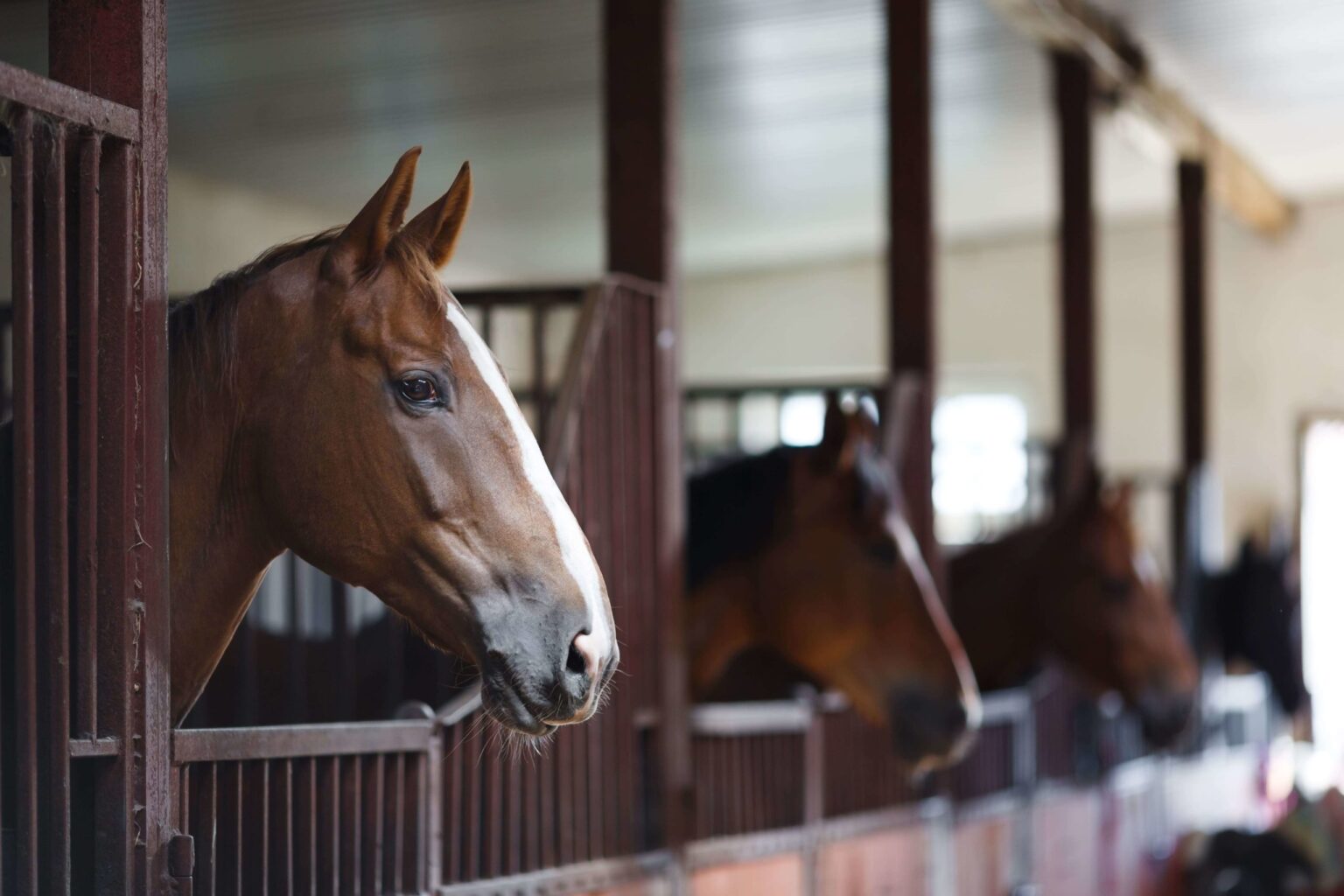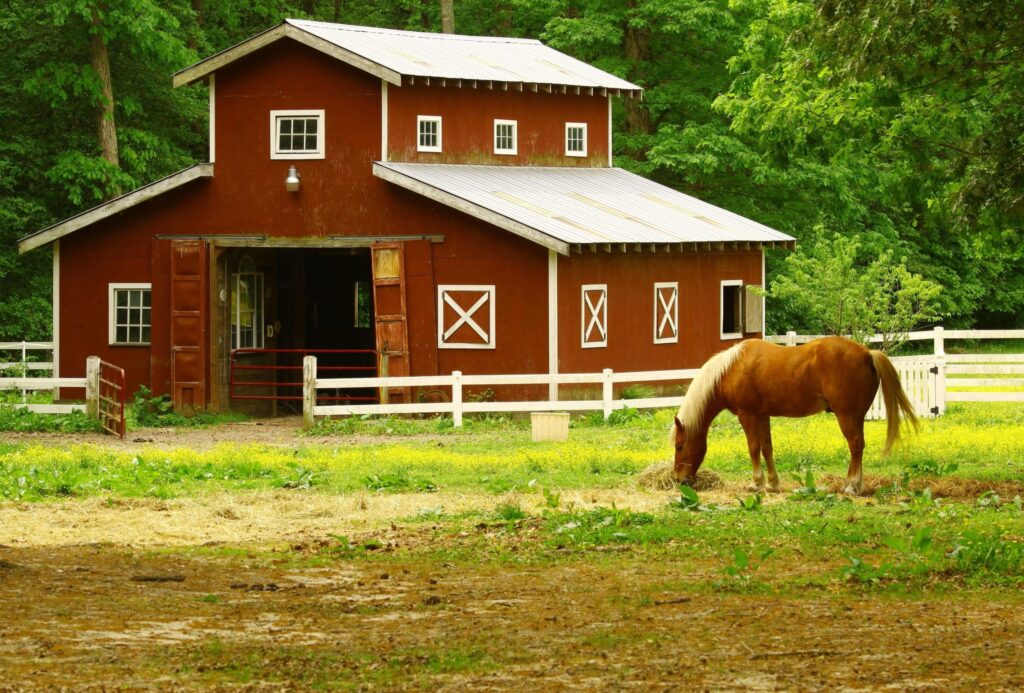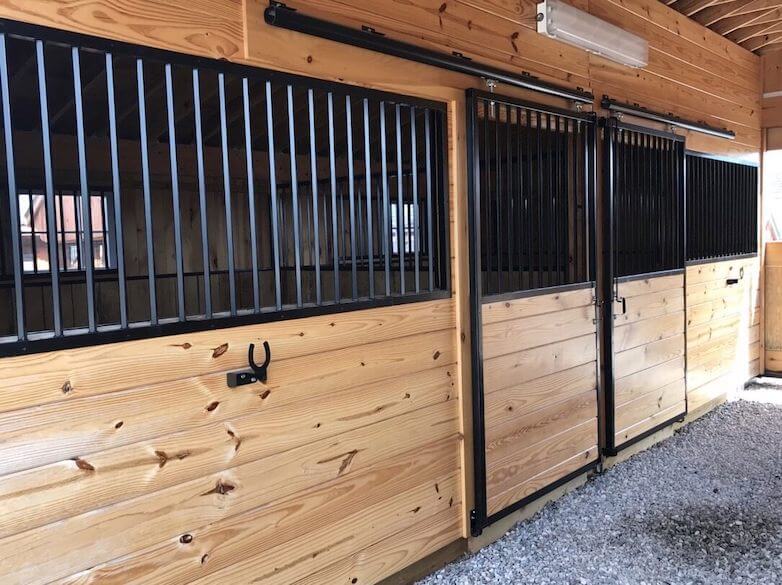
The terms barn and stable have a tendency to be used interchangeably. While they both have some overlapping similarities, the differences between them stem from their distinct purposes. It’s important when searching for a barn or a stable to understand which structure will be most beneficial to you and your needs.
When looking at barns vs. stables, you can see the variety of designs and styles each provides, allowing you to discover the perfect match for housing animals and any tools or gear. By seeing the differences, you will be able to specify which structure you want.
Barns
Barns are typically large structures used for storage or keeping livestock as opposed to housing horses. Some barns are also used for decorative purposes, like front barns or carriage houses. Barns were originally designed for practicality and aesthetic. Barns can be used for numerous reasons, and because of that, they come in a variety of styles.
- Bank Barns
- Round Barns
- English Barns
- Dutch Barns
- Prairie Barns
The designs of barns speak to their identity, but also their functionality. Depending on the purpose of yours, you can choose which style suits your needs best while also elevating your outdoor space.
Barn Design
A traditional agricultural barn has certain characteristics that work to make your job easier. When you are looking at a stable vs barn, the main difference comes down to design:
Tack Room
Every barn needs a tack room. This is where bridles, saddles, and other equipment is stored and kept organized. The planning and location of your tack room will depend on how many steps you want to minimize in the process of getting horses ready. With the correct layout plan, you will be able to save time and space.
Drive Bay
These are large corridors where storage for animals and machinery are placed. Everything from driving lawn mowers to hand tools, and from bagged compost to hay, is stored in the drive bay. These are important to keep tools and equipment safe and in an accessible area for use.
Silo
Silos are used to store or fermented grasses to feed animals during the winter months. They can be vertical or horizontal and made of different materials. They’re filled from a hole in the top and allow you to keep lots of nutritious silage on hand for animals.
Grain Bins
Though similar to silos, grain bins only store dry grains while silos store fermented pasture. Grain bins are cylinders with pointed metal roofs and an exterior staircase that leads to the top. They come in varying heights but are usually wider in diameter and made of corrugated steel.

Stables
Stables are structures used to house and care for horses. They usually consist of individual stalls where the horses stay. There are mainly two types of stables:
- Traditional Stables
- Stable Barns
Traditional stables are used exclusively for horses whereas stable barns or small horse barns are a mix between barns and stables, creating a different horse care experience. While these stable designs are used for different purposes, they usually incorporate the same elements.
Stable Design
Looking at the differences between barn vs. stable designs you will see that it comes down to purpose. When designing a stable, the goal should be functionality, but also comfortability for the horses. There are many different options for each design element within a stable, allowing you to stick to the traditional structure while adding your own unique aesthetic.
Stalls
There are two common types of stalls you can choose from when designing a stable. These are box stalls or loose boxes and standing or tie stalls.
- Box Stalls- According to the Canadian National Farm Animal Care Council, the size of a box stall for an average size horse should be at least 10’x10’ to 12’x12’.
- Standing Stalls- The size of standing stalls should be wide enough for a horse to lie down. This means they are typically 4’ to 5’ wide and 8’ long, depending on the size of the horse.
Both box and standing stalls should be at least 4.6’ high with a grill or sturdy mesh above. This allows the horses to see each other as well as have better ventilation.
Stall Doors
When choosing what kind of doors you want for the stalls, you can either pick swinging or sliding doors. Whichever you choose, it’s important to have a latch that opens easily, but that the horse cannot tamper with.
- Swinging Doors- These should always open towards the alley or aisleway.
- Sliding Doors- These should slide smoothly when opening or closing.
Both swinging and sliding doors should be at least 4’ wide. Always make sure the doors are securely closed at all times, ensuring that the horses will not escape.
Ceilings
Ceiling height will depend on the size of the horse. It should be high enough that the horse can raise its head comfortably without the worry of hitting its head on the ceiling. The standard ceiling height of 8’ will be fine for ponies or smaller horses, but if the horse is larger you may have to make the ceiling higher.
Lighting
When lighting your stable, you must make sure you’re prioritizing the safety of your horses. This means all plug-ins should be GFIC receptacles, and all wiring should be rodent and moisture resistant. Safety cages should be around each light, and out of any horse’s reach. Lastly, the light fixtures should be placed in a fashion that reduces dark areas.
Flooring
Most stable floors are made of concrete or stone. The surface can be roughened to make it non-slip, but drains will have to be placed in the floors because they won’t drain naturally. This also means stall floors will need to be well-cleaned to inhibit ammonia build-up. Using hard flooring makes it easier to disinfect and be hosed down, but it’s harder on the horses’ legs.
You can also use sandy soil as the flooring which is easier on the horses’ legs and are often warmer and quieter. However, earth floors are more difficult to clean and may require digging out and replacing if the soil becomes too saturated with urine and water.
Aisles or Alleyways
The aisles or alleyways are the pathways between the stalls. These should typically be at least 10’ wide. When it comes to aisle width, the larger the better because it’ll ensure room for horses to pass or be tied to groom.
Windows
Windows are great for natural ventilation and light, which is why it’s important to add as many as possible into your stable design. Make sure your windows are covered with a grill or sturdy mesh so that the horses don’t break the glass. It’s also better to use windows that swing open rather than slide up and down.
Barns vs. Stables: How to Pick
Choosing between a stable or barn ultimately comes down to what the purpose of your structure is. If your main concern is the housing of multiple horses, a stable may be your best option. However, if you’re looking for a space where you can store equipment as well as house a horse or two, a horse barn will likely be the better choice for your property.
Add A Horse Barn To Your Space
Check out the wide variety of styles and designs we offer in our Amish built horse barns.

